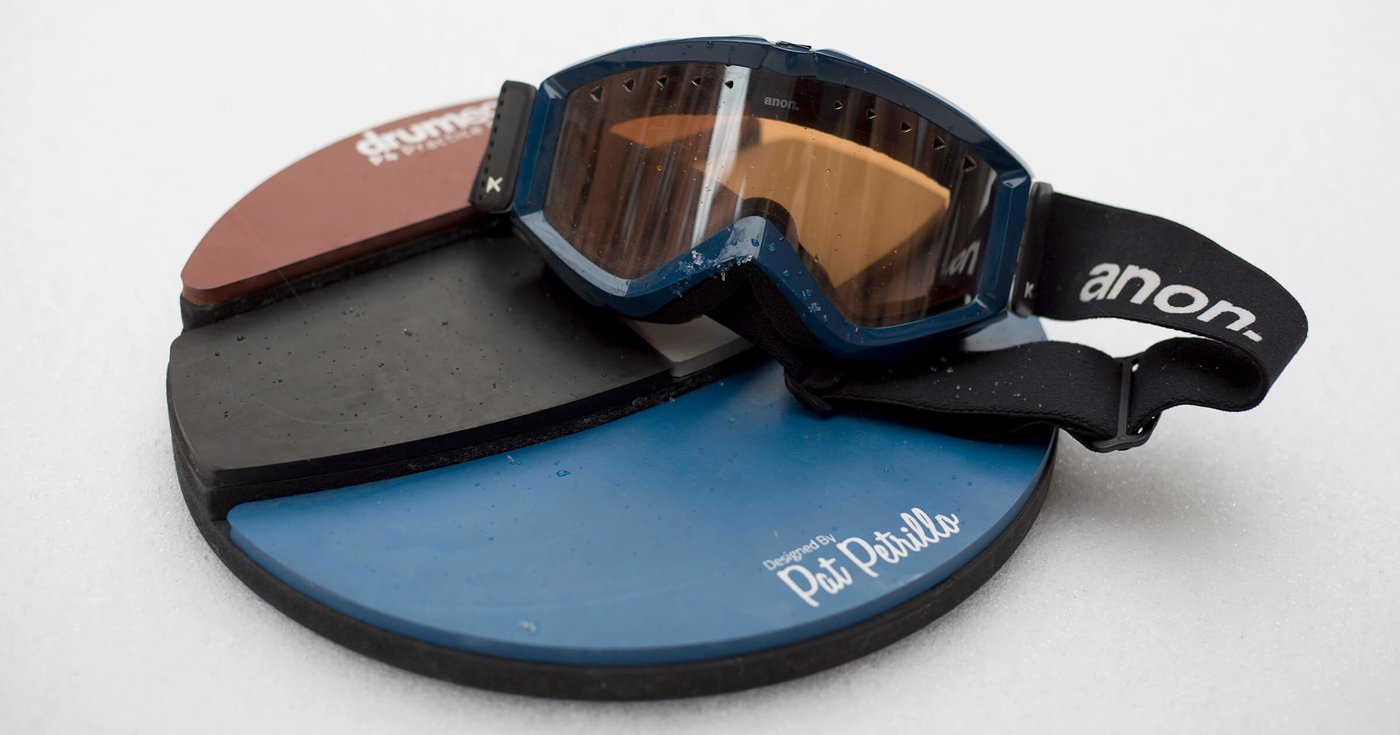
“Are there sticks in my hands? Because I can’t feel them.”
When the season turns icy, rehearsal spaces can get frosty. Even when your heart rate is up, your fingers and toes might still feel like falling off – especially if you practice in a garage or basement.
While cold or miserable weather usually means fewer distractions from drumming (one advantage over summer practicing), it also comes with its own set of challenges. Getting up from a comfortable couch to play drums in a freezing room is one of them.
The more comfortable your drum room, the more likely you’ll be to want to practice. At the high end of the price scale, you can improve the insulation. If it comes down to it, build a ‘room inside of a room’ – not only will it be warmer, but it’ll be more soundproof, too.
If you’re doing it yourself, use a candle or lighter to find any drafts and seal those areas. Use weather strips or better caulking on windows and buy (or make) a draft stopper to block any space under doors. Hanging blankets over windows is another good way to trap heat and sound, but make sure to leave a gap behind the fabric.
You can pick up a space heater, but keep it away from the drums. And if you’re really strapped for cash, you might have to get used to layering clothes and playing in gloves…but if it keeps you playing, so be it!
Cold and moisture can affect your drums, especially if there’s a rapid change in temperature. Wood drums are the most susceptible to warping. This isn’t as big of an issue if the room’s climate is consistent, even if it’s constantly cold. Moisture is a much bigger threat to your drums and cymbals. Metal parts can rust or corrode (especially hardware and steel drums) if they develop condensation.
Just in case, putting blankets over your kit can protect it from dust and moisture build-up.
Make sure you’re playing on carpet and not directly on concrete, and set up your drums as far away from doors and windows as possible.
If you have wood drums, you’ll likely end up having to tune your drums much more often in the winter due to slight expansion/contraction in the shells. If you do get moisture in or on your drums, take everything apart (remove as much hardware as you can) and dry all the pieces with a towel.
If it’s cold when you first sit down, kick off your practice session with some exercises that’ll get your blood flowing. Start with these simple ones to get you moving around the kit. Once you get comfortable, slowly increase the tempo:
Here’s an over-the-top drum fill that may not be useful in a musical context but it’ll definitely get the blood flowing! (Disclaimer: Don’t make this your first warm-up…we beg of you)
The changing of seasons – gray skies, rain or snow, and less daylight – can bring on symptoms of depression in some people while demotivating others. It’s more common in Northern cities and can wreak havoc on melatonin and serotonin levels due to less natural sunlight.
If you tend to feel lethargic and unmotivated in the winter, there are a few ways to combat these symptoms and get back on the drums. Go outside and expose yourself to natural light. Exercise if possible. And if you’re feeling particularly bad, try using a light box that mimics sunlight. Try not to let the darkness get you down.
It’s easy to get complacent when you aren’t in the habit of practicing. If it means sitting down behind the kit as soon as you get home from work (ie. before you settle in and get cozy), setting a daily alarm, promising yourself ample rewards or finding a drummer buddy to practice with, do whatever it takes to convince yourself to follow a routine.
That being said, getting into a routine is tough when your actual practice time isn’t that exhilarating. So make it interesting for you, and make it count! Try the Pomodoro Technique for a super efficient session:
If winter is getting in the way of you playing drums, it’s time to take back your day. Every season is drumming season. Stay warm out there!
Samantha Landa currently drums with Conquer Divide and has been featured by outlets such as Sick Drummer Magazine and DRUM! Magazine. Sam proudly endorses Mapex Drums, Sabian Cymbals, Evans Drumheads and Los Cabos Drumsticks.


By signing up you’ll also receive our ongoing free lessons and special offers. Don’t worry, we value your privacy and you can unsubscribe at any time.
We use cookies for traffic data and advertising. Cookie Policy »